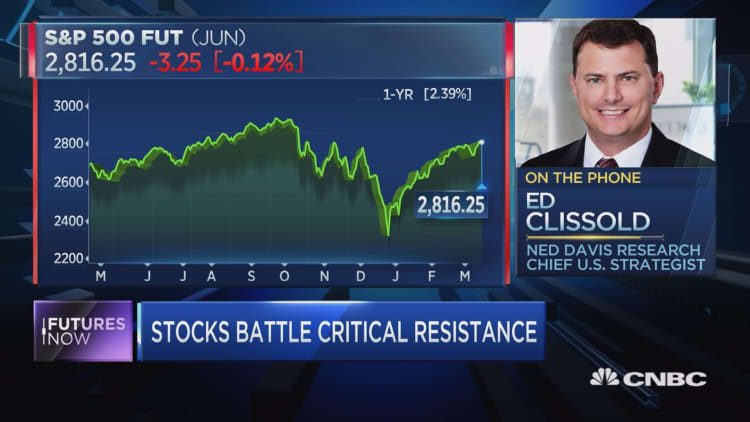
Market watcher Ed Clissold, who called the December plunge, is shifting his 2019 strategy.
For the first time since the sell-off, the Ned Davis Research chief U.S. strategist is favoring growth over value stocks.
"[We] went neutral for a few months. Now, we're back into growth," Clissold said Thursday on CNBC's "Futures Now." "When you have this sluggish economic environment like we have ... investors are going to flock to the few companies which can deliver, and by definition, those are growth stocks."
But his new game plan doesn't mean stocks are in the clear. Clissold isn't ruling out another meaningful sell-off.
"We've had a great run since the December lows almost uninterrupted. Usually, you get some sort of pullback after a big bottom like that," he said. "It usually happens around a month after the lows. So, we're a little bit late for that."
The earnings slowdown could create downward pressure when first-quarter earnings season starts next month, according to Clissold. He also lists a global slowdown and overly bullish sentiment as potential catalysts for a major setback.
"If you look within six months after a low, the average peak to trough correction is a little over eight percent. That would take us around 2,580 on the S&P," he said. "I just emphasize that that's the average. We're going to focus on sentiment. See when we get to pessimism. If that happens above 2,600, we may say that's enough."
Despite Clissold's near-term cautiousness, he predicts the will close the year in record high territory, exceeding the 2,940 hit last September.
"Coming into the year, it was 2950. We haven't changed it," Clissold said, adding it's about a 6 percent annualized gain which is a typical gain for a normal year.
The S&P 500 closed the week up 3 percent and is now up more than 20 percent since the December low.



